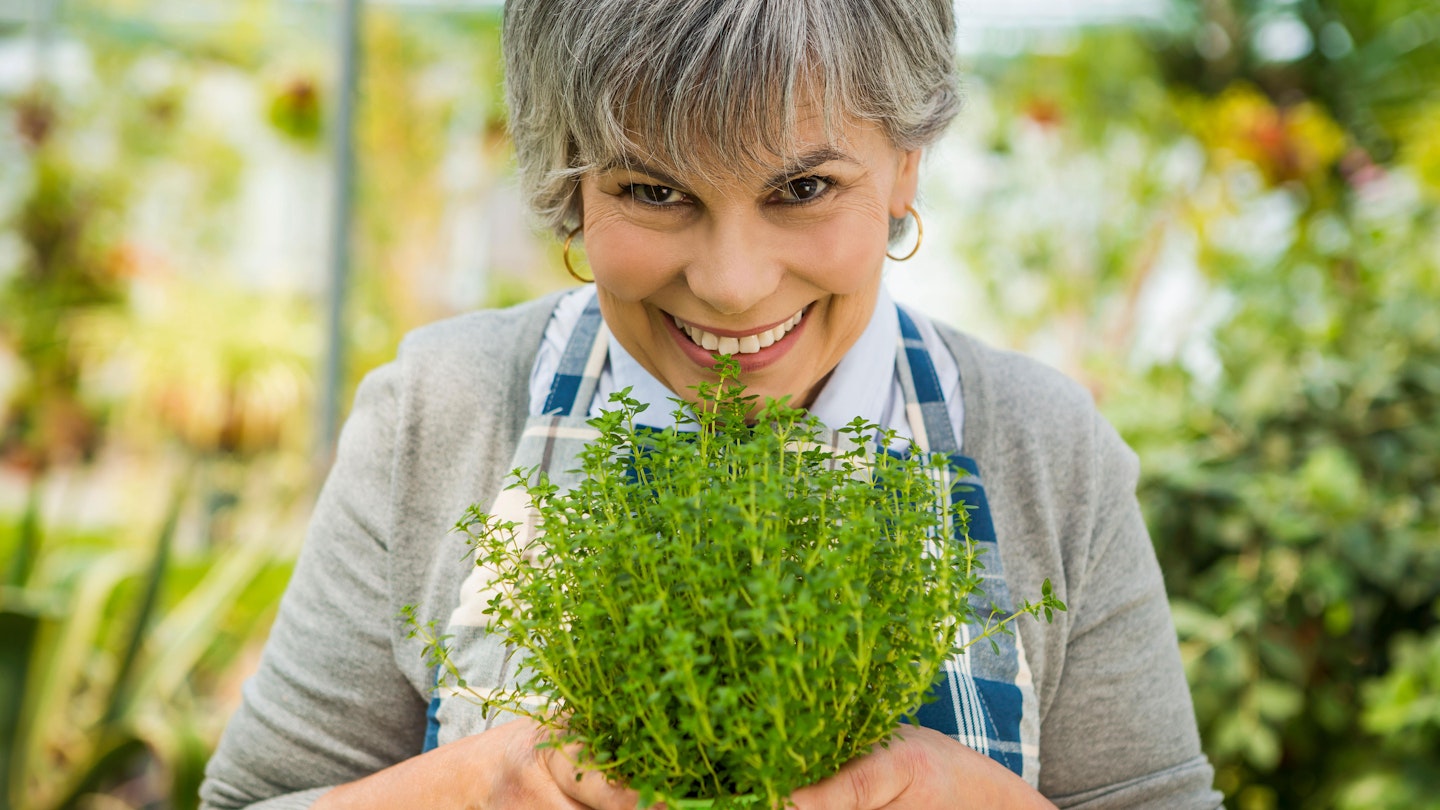Herbs are one of the easiest plants to grow indoors – especially if have very little space to play with. You needn’t be a green-fingered gardener either. All you need is a sunny window to create your own little herb garden to enjoy a convenient supply of homegrown produce at the clip of a sprig.
Although relatively easy to grow, there are a few steps to practice to ensure a successful crop. So we’ve created this handy guide to help you get started.
Where can I grow herbs?

To see the best results, herbs need as much exposure to natural light as possible. To see them thrive, you’ll need to place them by an unblocked sunny south-facing window that typically receives six hours of sunlight a day. Do take care though – if the leaves touch the windowpane, they can be in danger of getting singed by hot glass. Similarly, if the window area is prone to being drafty, you’ll need to try and keep it insulated – even if you just use a small hand towel.
If you have west-facing windows, you may want to opt for herbs such as parsley, thyme and mint, as they require less light. If you don’t have a suitable sunny spot, don’t worry. You can solve this issue by investing in an under grow light. These are also particularly handy in the winter months when there isn’t much natural light. You’ll need to place the plants within a foot of the club and have the lights turned on for around 12-16 hours a day.
Which herbs can I grow indoors?
You’ll no doubt already have your favourite herbs for cooking with. But some varieties are better suited to growing indoors than others. To get started, we recommend opting for the likes of:
Basil

-
Basil is perfect for pairing with tomato-based dishes. It loves heat and bright light, but dislikes cool, draft-prone spots. It isn’t a long-term houseplant, so you’ll need to plant a new batch of seeds every few weeks if you want a steady supply.
Thyme

-
This heady, aromatic herb is perhaps one of the most versatile ingredients in world cuisine. It prefers warm sunny windows and fast-draining soil.
Parsley

-
Parsley is more than just a garnish. It adds bright colour and flavour to soups, salads and fresh sauces and is particularly tasty when paired with poultry and fish. You’ll need to grow it in a deep pot with access to strong light.
Mint

-
Mint is a staple for creating refreshing drinks – from hot herbal teas to cooling mojito cocktails. It’s both an attractive and hardy houseplant, but it does require moderate to strong light.
Oregano

-
Oregano can be used in most cuisines – especially Italian. Use it in sauces, meats, casseroles, stews and soups. As a member of the mint family, it also likes moderate to strong light.
Chives

-
Chives add a lovely mild onion-flavour to soups, salads and egg-based dishes. When cutting, ensure you leave at least two inches of growth so the plants can resprout. They grow best in bright light.
How do I grow herbs?

You can start growing your herbs from either seed or cuttings – which is a branch of an existing plant cut at the node and soaked in water until new roots sprout. However, a much quicker and easier way to get started is to purchase seedlings from a garden shop, or a pre-potted plant from the supermarket.
If they do come from outside, you should always ways check for pests – like aphids and spider mites– before bringing them indoors. While they can often be removed with some soapy water, it’s much better to start off with pest-free plants.
Your herbs need to be placed inside a container with good drainage that can sit on top of a saucer or plastic protector, to ensure the surface remains protected when the water begins to drain out.
When should I start growing herbs?
Annual and biennial herbs like basil, coriander, parsley, dill, and chervil are fast growing and best sown at intervals throughout the spring and summer. Perennial herbs like oregano, mint, thyme, sage, rosemary and chives grow much slower and need a more permanent home.
Care and maintenance

Sadly, it’s not possible to leave your herbs to their own devices forever. But a little TLC will go a long way…
Water – but not too much
Compared to other plants, herbs require very little water. You’ll want to keep the soil moist but not soggy, as this can be fatal to some plants. If you notice the leaves beginning to wilt or turn yellow, it could be a sign that you have been over-watering.
Give them a trim
Like most plants, regular cutbacks encourage new growth – but avoid removing more than a quarter of the plant at a time, as too much trimming can cause distress.
Repot them
If you follow these tips, the chances are your herbs will get bigger and will eventually outgrow their containers. Plants beginning to flop (not wilt) over, roots coming out of the drainage holes or a halt in growth can all be signs that it’s time to move your herbs into larger pots.
